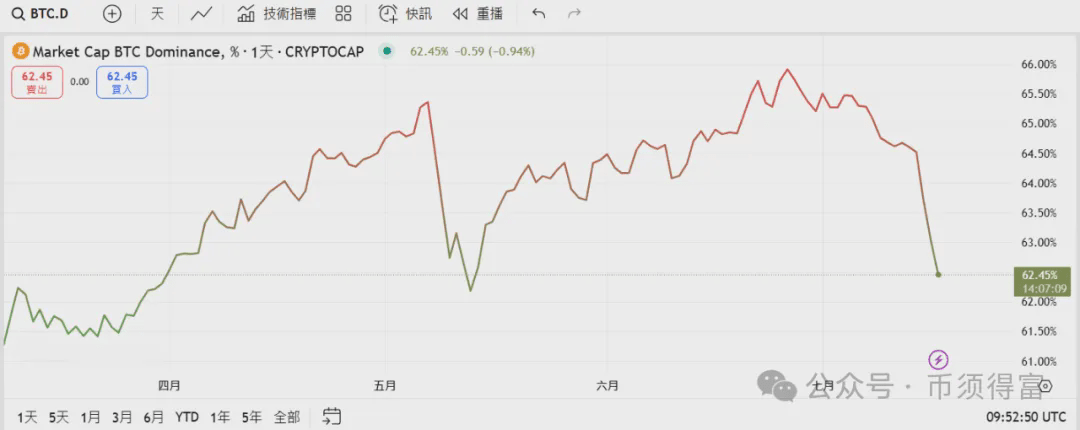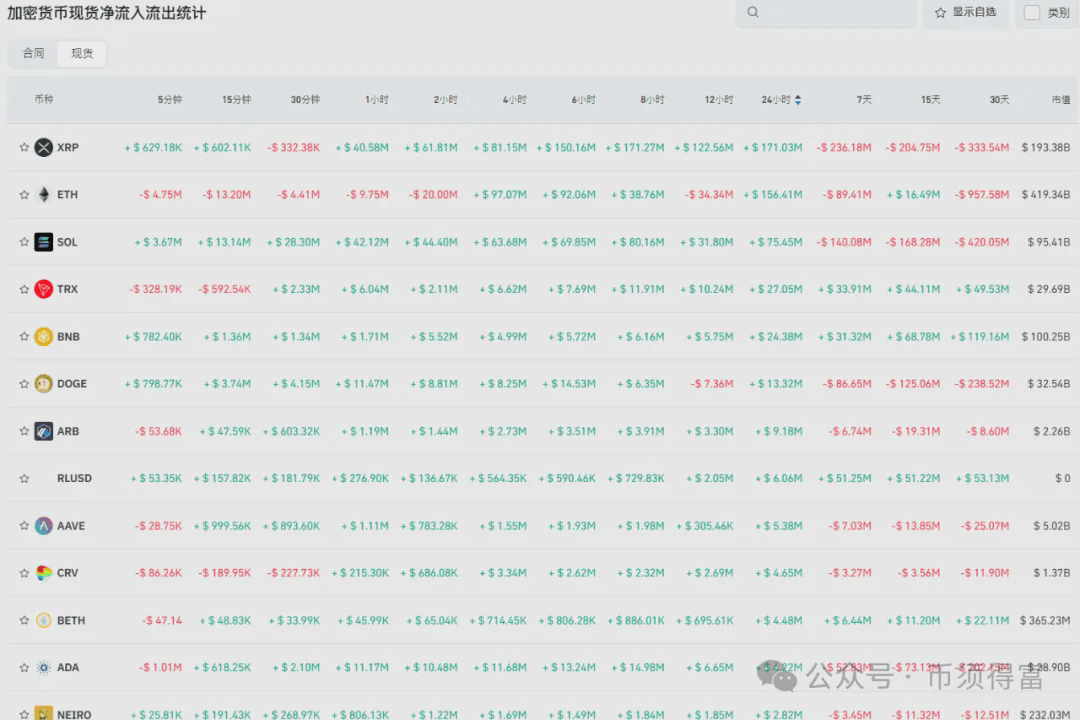Other articles can be skipped, but this one must be read!!!
In a recent article, we analyzed the core logic behind Bitcoin's surge, and clarified the layout opportunities for retail investors in the current market. One key signal mentioned is: while Bitcoin continues to rise, its market share is continuously declining, which is actually a clear signal of capital flowing into the altcoin market.
Old fans should know that before the altcoin surge started, I had already hinted in the community that 'the opportunity for retail investors has come' and shared strategies for the coins to ambush.
Today we will delve into: How can ordinary investors capture market dynamics in advance and hit the rhythm before the market starts?
Capturing market dynamics is key to our funding decisions, make sure to read it all!!!

Looking at capital flow signals from Bitcoin's market share
To grasp the altcoin market, one must first establish a foundational understanding of Bitcoin—In the cryptocurrency circle, 'the big brother (BTC) sets the direction, the little brothers (altcoins) follow the rhythm' is a long-term rule. If Bitcoin does not start a trend, altcoins are unlikely to have a sustained market; but after Bitcoin stabilizes its trend, the rhythm of capital flow becomes key.
Taking May as an example, Bitcoin's market share also saw a temporary decline, but I did not propose the judgment of 'altcoin season starting,' the core reason being that Bitcoin had not yet broken through historical highs. At that time, Bitcoin was in a high-level consolidation phase, and there were concerns about 'retreating after a failed breakout.' Although there was a short-term capital transfer, it lacked new capital entering the layout; more was merely a maneuver of existing capital, which could hardly support a sustained rise in altcoins.
The current market is completely different: Bitcoin has not only broken through historical highs but has also surged to the $120,000 mark, with institutional funds deeply rooted (the mentioned surge in corporate holdings and continuous inflow of spot ETFs are evidence). At this point, the continuous decline in Bitcoin's market share is no longer a game of existing capital, but a signal that new incoming funds are starting to flow towards potential altcoins after the Bitcoin trend is clear. This is also why we can be more confident in judging the 'altcoin season is approaching' core logic.
Why does Ah Li keep mentioning in articles and in the community to encourage everyone to buy more Ethereum spot and invest periodically? Because as the altcoin season approaches and market projects develop, Ethereum's current price is completely undervalued.
Ethereum: The undervalued ecological core, why is it worth long-term layout?
Among altcoins, Ethereum, as the leader, has not fully exploded in performance recently, but its long-term value is severely undervalued. To understand this, one must first clarify the core differences between Bitcoin and the Ethereum public chain—this directly determines their positioning in the blockchain ecosystem (there are many differences, and we won’t elaborate on all of them here, just share one key point):
The core characteristic of the Bitcoin public chain is its single functionality and immutability, leaning more towards the 'digital gold' storage attribute, making it difficult to support complex application development.
Ethereum's public chain supports smart contracts and programmable development on the basis of decentralization, allowing developers to build decentralized applications (DApps), DeFi protocols, NFT platforms, and other diverse ecosystems.
Currently, traditional institutions' 'on-chain layout' is accelerating: scenarios like tokenization of US stocks, stablecoin issuance, and cross-border settlements all need to rely on mature blockchain infrastructure for execution. If institutions do not independently develop public chains, they must rely on existing ecosystems—Ethereum, with its large developer ecosystem and comprehensive application support, becomes the first choice for most institutions. This 'ecological necessity' determines that Ethereum's value has not yet been fully tapped, which is also the core reason why I suggest everyone hold Ethereum spot for the long term.

In addition to Ethereum, these main chain projects are also worth paying attention to.
In addition to Ethereum, currently stable Layer 1 (L1) main chain projects also have long-term attention value, such as Solana (SOL), Cardano (ADA), Near Protocol (NEAR), Avalanche (AVAX), etc. These main chain projects have their own advantages in performance optimization, ecological adaptation, and as blockchain application scenarios diversify, different main chains will meet different ecological needs. For ordinary investors, while grasping the Bitcoin trend and laying out Ethereum, paying attention to these technically solid and ecologically stable L1 main chains is also an important direction for capturing market segmentation opportunities.
In summary, the core of capturing market dynamics in advance lies in understanding the three levels: 'Bitcoin trend sets direction, capital flow looks at details, ecological value distinguishes targets.' When Bitcoin stabilizes at a new high and institutional funds take root while core altcoins like Ethereum remain in a value pit, it is a key window for laying out quality assets.